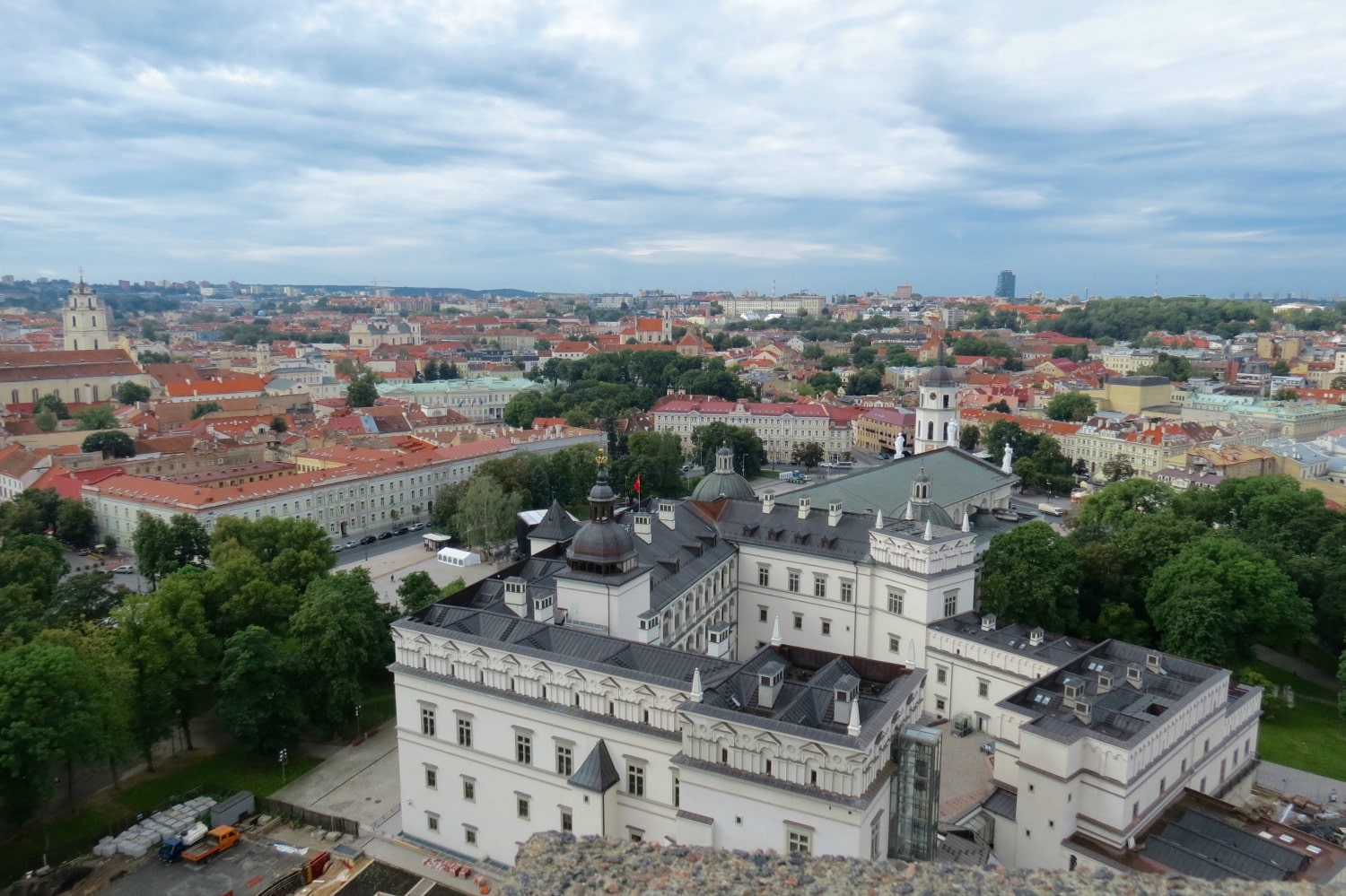If you were to try to guess where the geographic center of Europe is, you’d probably be wrong. The outer reaches include a remote area of Norway to the north, the Canary Islands to the south, the crests of Russia’s Ural Mountains to the east, and the Azores to the west. But at the very center of Europe — as determined by a French geographic society — stands Lithuania, specifically a spot 26 kilometers from the country’s capital of Vilnius. It’s amusing to think that this intriguing Baltic nation, off the radar of most mainstream European travelers, is actually at the heart of it all. And what a heart Lithuania has.
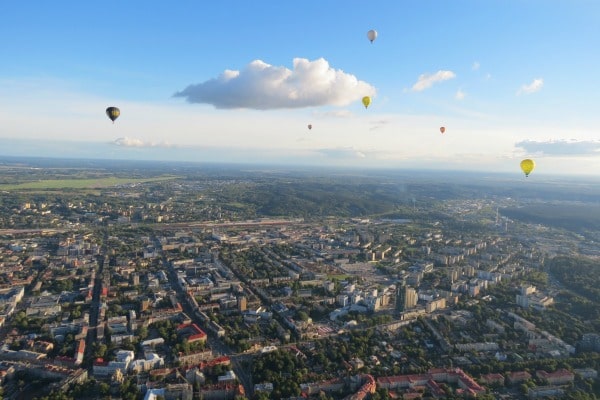
For decades, Soviet rule prevented travelers from exploring Lithuania, but as I tour the capital of Vilnius, there are few reminders of those oppressive times. What I find instead is a beautiful and thriving city, rich with history that dates to the 14th century when Lithuania ruled a massive swath of Europe. Castle turrets and cathedral spires dot the city skyline, which I view from a hot air balloon that glides over old town.
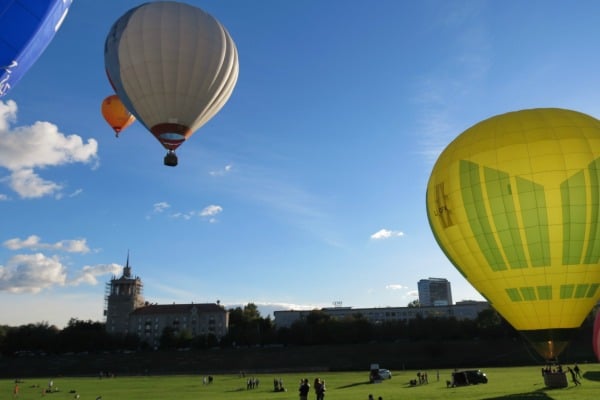
At the center of Vilnius, a UNESCO World Heritage designated city, is the sprawling Cathedral Square where old and new towns converge. It’s a place for festivities and historic sites like the Palace of the Grand Dukes of Lithuania, underneath which stands the archaeological remains of the 13th century defensive walls of the city. Research on the ruins only began in the late ‘80s as Lithuania began retracing its roots, with the ruins now turned into a fascinating museum. Among ancient armor and artifacts are, curiously, diamonds found among ancient toilets. Conjecture is that since only nobility had use of the toilets, it was there that the occasional gem came undone from ornate clothing.
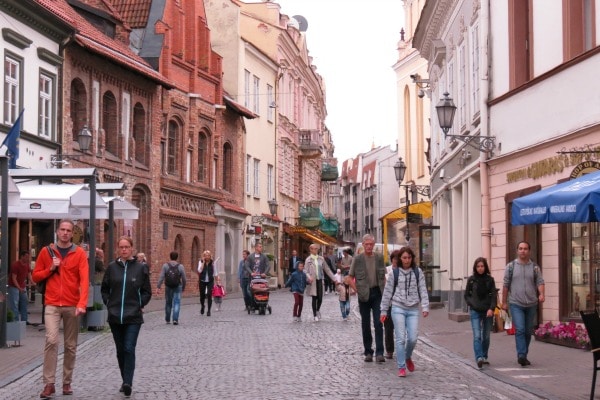
Gold of the Sea
From Cathedral Square the cobblestone streets of old town emanate like spokes of a wheel. Winding streets are flanked by outdoor cafes and shops filled with “gold of the sea,” i.e. amber. Millions of years ago, tree resin was transported along rivers into Baltic Sea beds where it fossilized into the glowing gems of today. The most precious feature specks of fauna and insects, but the essence of amber seems omnipresent in Lithuania. I even luxuriate in a spa treatment that includes amber sand. Particularly charming in old town is also Literati Street, which has walls embedded with plaques dedicated to famous Lithuanian literary figures. I then enjoy taking a funicular to the upper hillside castle of the Duke of Lithuania that features lookout areas with spectacular views of Vilnius and the Neris River, which flows into the Vilnia River that lends the city its name.
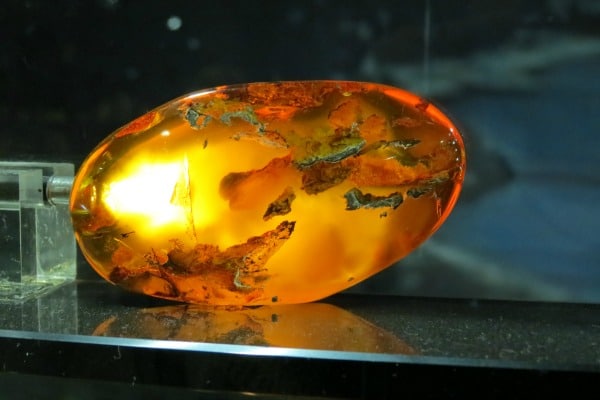
Ancient to Avant-Garde Attractions
On a diversion from the city I travel west, less than an hour, along the Neris River to the first Lithuanian capital, Kernave. It’s a scenic setting with rolling hills where items were found dating to the Iron Age when the region was an important tribal center. Kernave’s archaeological museum showcases those finds, as well as later discoveries from when Amber Road led south for trading with the Romans. In fact, Lithuania is steeped in history, including its language with many words the same as ancient Sanskrit.
On a more contemporary note is an open-air museum, Europos Parkas, not far from the geographic center of Europe. Miles of wooded paths wind past more than 125 sculptures and avant-garde oddities such as a massive installation filled with old Soviet TVs. The park’s founder, Gintaras Karosas, was just 19 years old in 1987, during the Gorbachev era, when he first wrote the government a proposal for a small park, stating that “culture must not just be in town but in nature.” The park has since grown to more than 100 acres.
I also visit the country’s medieval capital, Trakai, situated along a scenic lake not far from Vilnius. Artisan stalls dot the shoreline, nautically dressed captains offer boat rides amid calm waters, and a wooden bridge brings pedestrians to Trakai Island Castle where Lithuania’s sovereigns once resided.
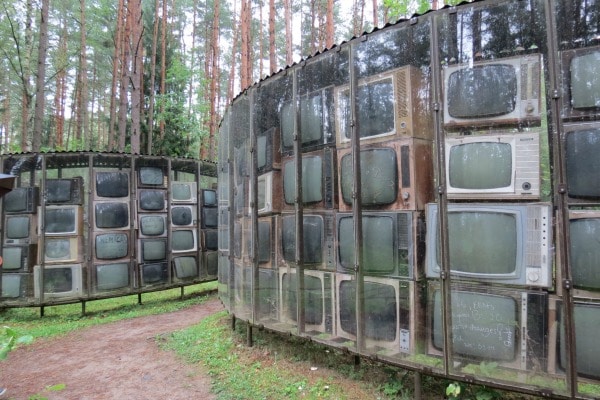
Chill of the Cold War
In truth, despite having Lithuanian heritage, I had no idea the country was so steeped in history, and it comes as a pleasant surprise. Still, I can’t ignore more recent Cold War history, so back in Vilnius I find my way to the KGB Museum, a former Soviet-era prison. This museum is a somber trip back in time since within its walls Lithuanian resistors to the Soviet occupation were tortured or murdered. Among Baltic nations, Lithuanians were known as being the most stubborn in the face of Soviet oppression, and the KGB Museum presents their fight in eloquent and visually compelling exhibits.
Having retraced these many highlights of Lithuania’s roots, I make my last diversion in Vilnius. I can’t return home without gold from the sea, especially given shopping orders from family. To my surprise, the prices of these pieces of history are quite reasonable. It allows me to leave Lithuania so much richer than when I arrived, but then, I’d already been enriched by this Baltic nation in so many, many ways.
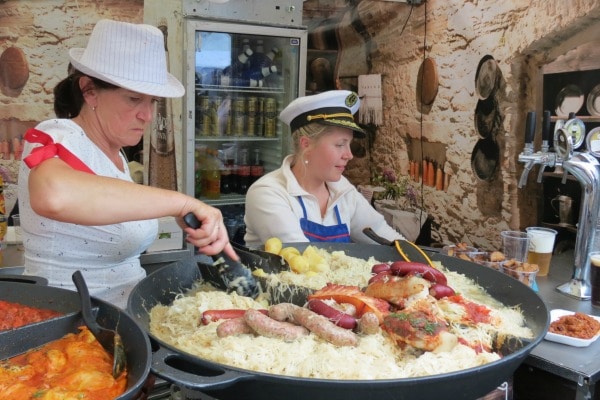
How to Get There:
Finnair flies to Vilnius via Helsinki, www.finnair.com
Where to Stay:
Kempinski Hotel Cathedral Square — Beautiful views and 5-star luxury in an unbeatable location in the heart of Vilnius’s Old Town. Rates start at approximately €150 per night (including breakfast), up to €2300 for a presidential suite. www.kempinski.com

